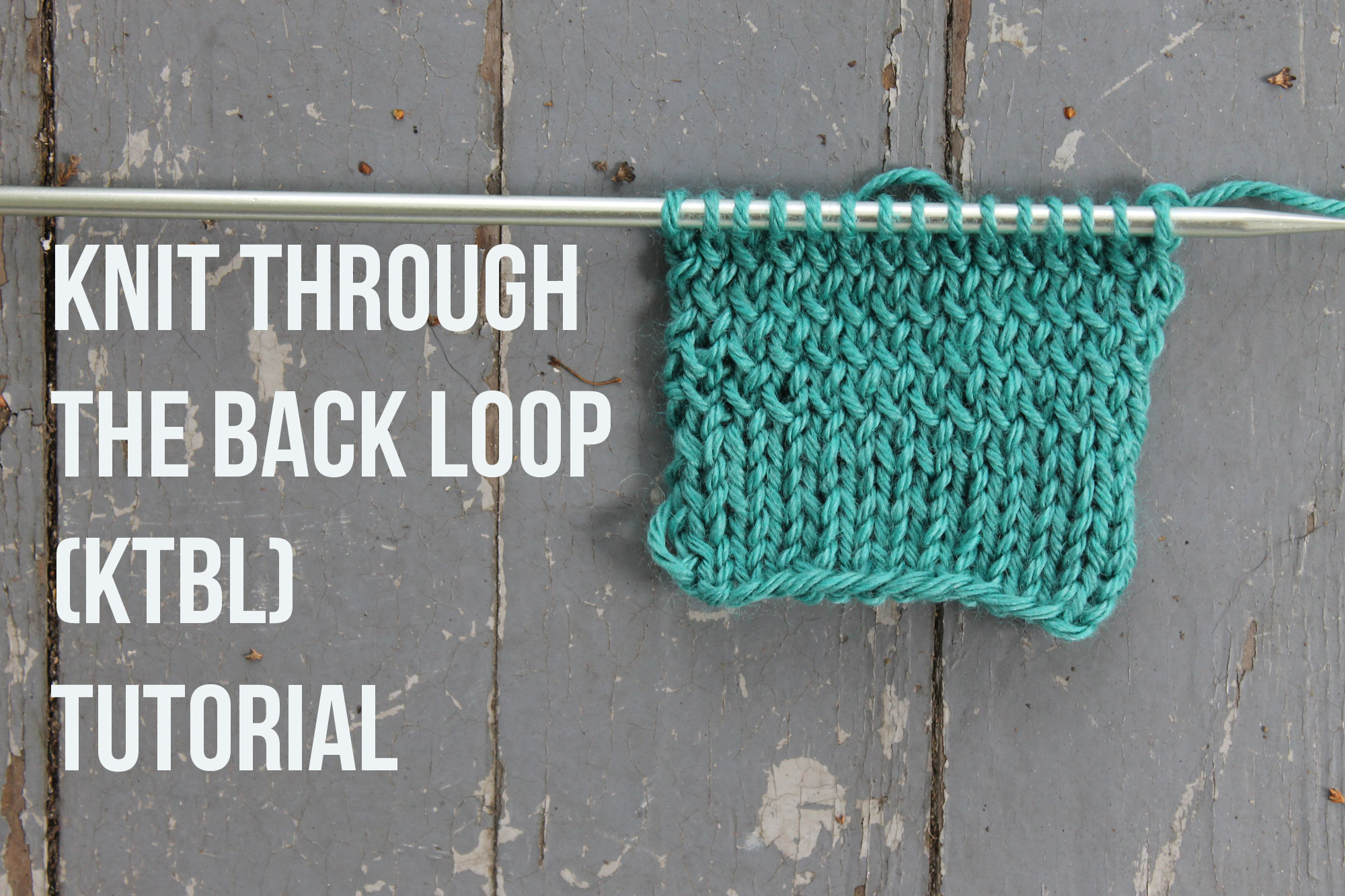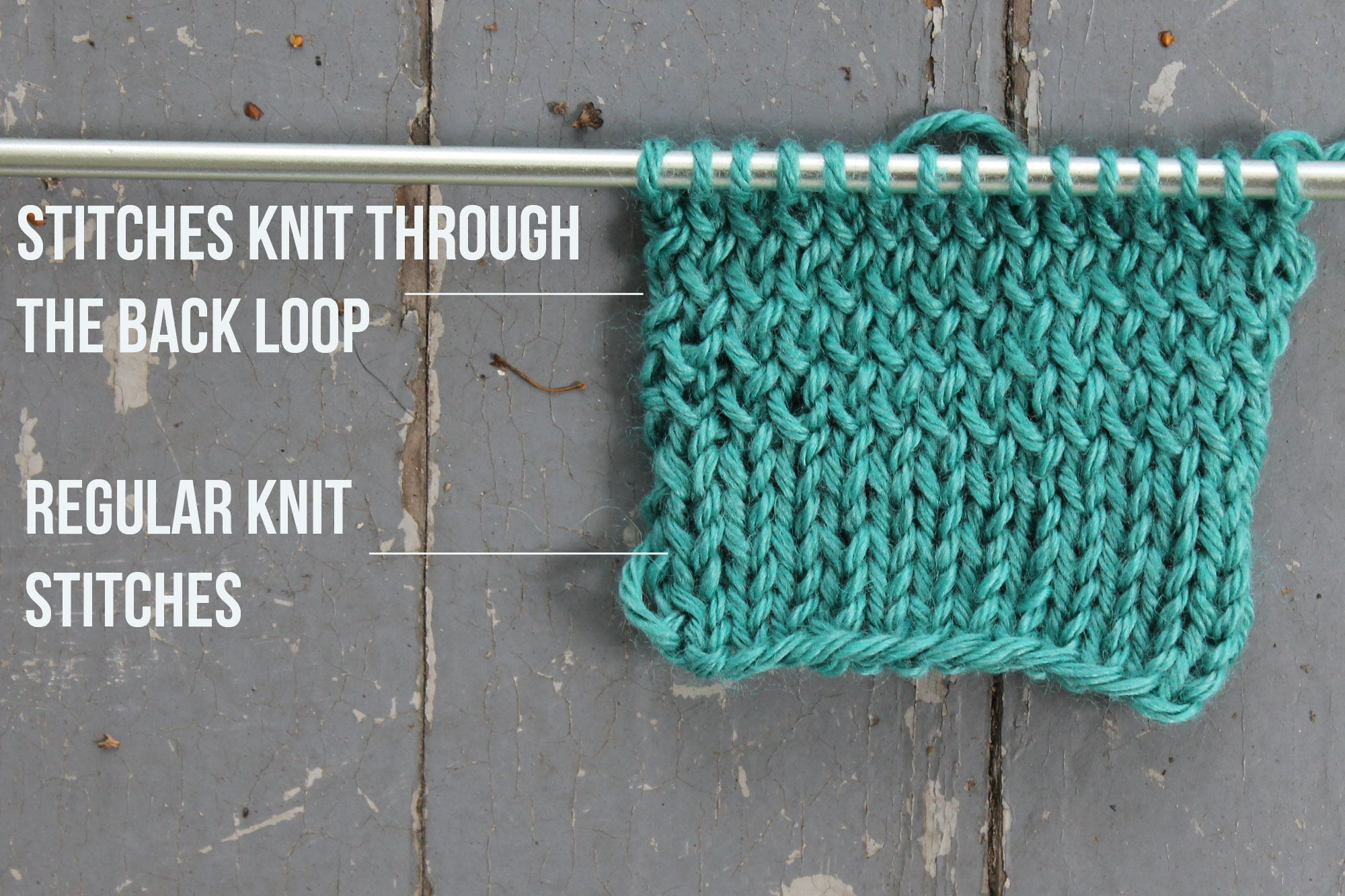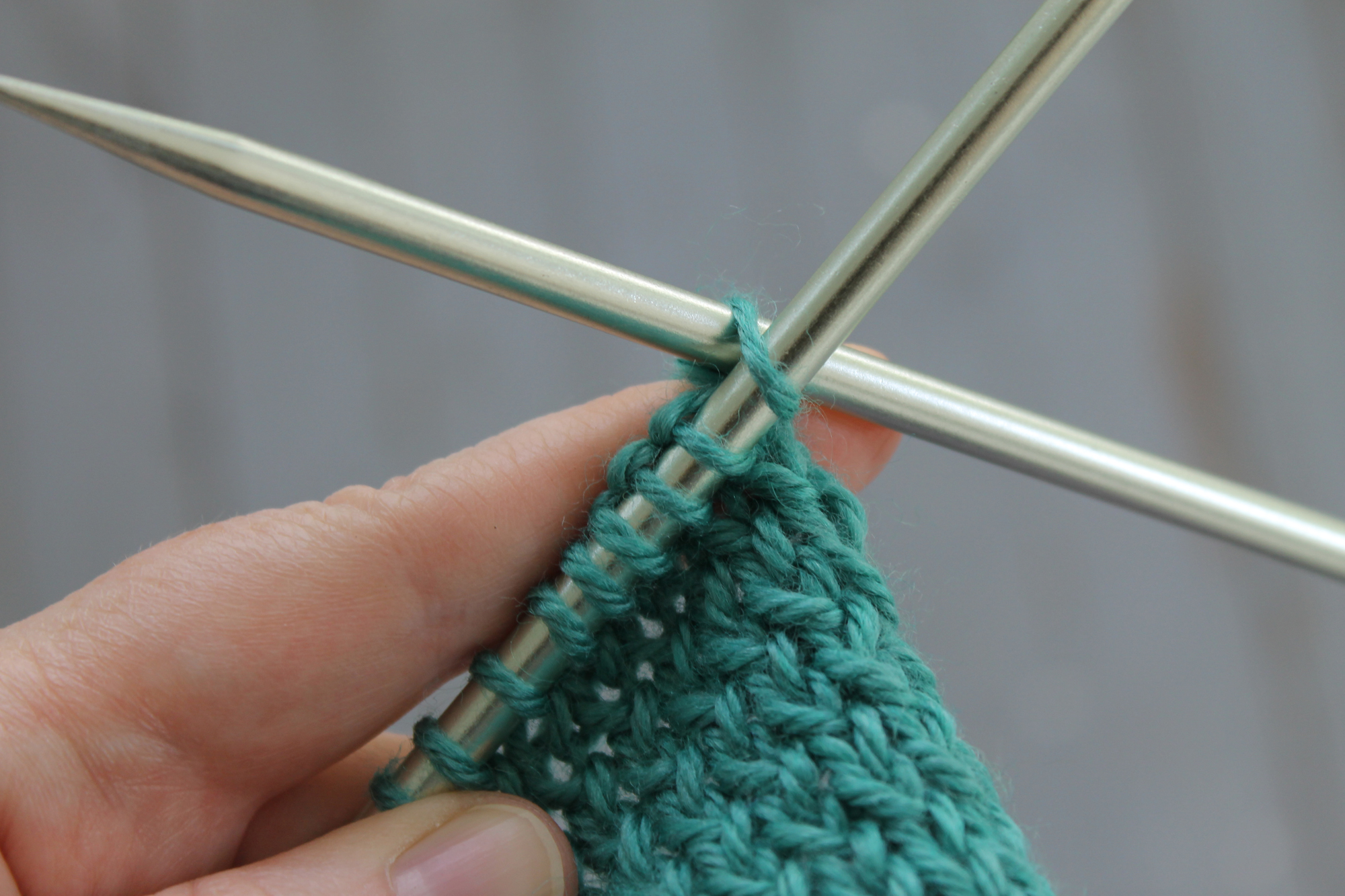Did you see “ktbl” in a pattern and panic a little? Don’t worry! Ktbl is the abbreviation for “knit through the back loop,” and it’s so easy that even beginners can do it.

Get a tutorial plus tips for when to knit through the back loop (ktbl).
Knitting through the back loop has a few functions, but the most obvious is that it twists the knit stitch. It’s also used for other useful techniques like increasing, neatening edges and properly mounting stitches on the needle when they get twisted the wrong way.
Ktbl is more useful than you thought, huh? Get a quick tutorial to knit through the back loop, then take a look of a few ways you can use it in your knitting.

Take a look at the difference between your usual knit stitch and a knit stitch worked through the back loop in the photo above. Notice that the stitches knit through the back loop, on the top half of the swatch, have a neat little twist where one leg of the stitch crosses over the other, while the regular knit stitches just have that classic V shape.
For the usual knit stitch, most of us insert the needle from front to back as the first step. The knitting needle goes through the front of the stitch to the back like this:

But when we knit through the back loop, we’ll insert the needle at a different angle. The right needle is inserted into the back loop of the stitch like this:

Inserting the needle through the back loop makes the leg of the stitch twist in a different way, causing a little criss-cross in the V shape.
When to use ktbl
To increase
There are many different types of increases, but one increase involves knitting the stitch, leaving it on the needle, then knitting that same stitch through the back loop. This creates two stitches from one stitch. Sometimes you may also see this abbreviated as k1f&b or kf&b, which means you should knit one through the front and the back of the same stitch.
Combined knitting
Craftsh blogger Sarah was very confused when she saw ktbl show up in a pattern for the first time. That’s because Sarah is a combination knitter. These knitters knit through the back loop all the time because their stitches are mounted on the needle in a different way. You can read more about Sarah’s combined knitting here.
Decoration
You’ve already seen what knitting through the back loop does to twist a stitch. If you want to add some extra decoration and unexpected detail to your knitting, knit through the back loop to add some pretty little twists. I love the idea of adding a few rows of ktbl on the hem of a stockinette sleeve or sweater body for an unexpected change in stitch.
Neatened edges
If your stockinette stitch has loose, yucky edges, then you can add a chained edge to make it neater. Check out Solution 3: Chained Edge in the linked blog post to see how knitting through the back loop on the first stitch of wrong side rows can help form a neat edge. (There are a lot of other solutions for neat edges there, too!)
Mounting stitches properly
Have your knit stitches ever accidentally been turned around on the needle? It might be from ripping back and mounting live stitches on the needle or maybe you just dropped a stitch and placed it back on the needle the wrong way. No matter how that stitch was turned around, you can knit the stitch through the back loop to re-orient it properly on the needle.

Share tips, start a discussion or ask other students a question. If you have a question for an expert, please click here.
Already a member? Sign in
No Responses to “What Is KTBL? A Free Tutorial for This Easy Technique”